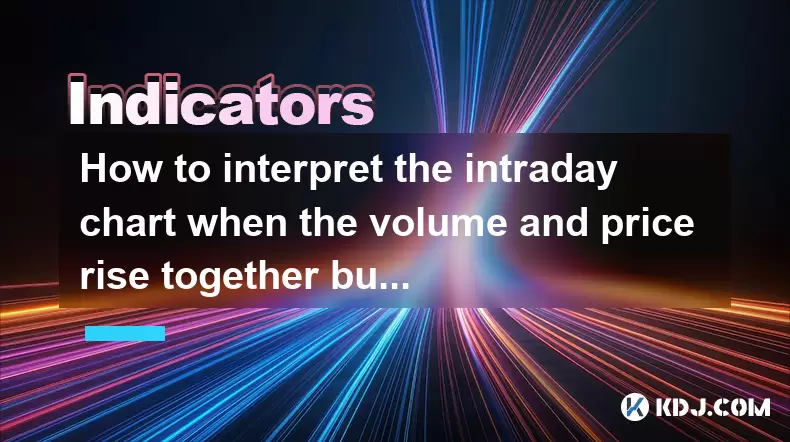-
 Bitcoin
Bitcoin $108,092.5658
-0.99% -
 Ethereum
Ethereum $2,546.4530
-1.12% -
 Tether USDt
Tether USDt $1.0000
0.01% -
 XRP
XRP $2.2676
0.12% -
 BNB
BNB $659.1616
-0.30% -
 Solana
Solana $148.8297
-1.97% -
 USDC
USDC $1.0000
0.02% -
 TRON
TRON $0.2874
-0.30% -
 Dogecoin
Dogecoin $0.1676
-3.64% -
 Cardano
Cardano $0.5765
-1.73% -
 Hyperliquid
Hyperliquid $37.2069
-6.18% -
 Bitcoin Cash
Bitcoin Cash $497.9918
-0.10% -
 Sui
Sui $2.8427
-2.26% -
 Chainlink
Chainlink $13.2689
-2.06% -
 UNUS SED LEO
UNUS SED LEO $9.0541
0.15% -
 Stellar
Stellar $0.2487
-0.92% -
 Avalanche
Avalanche $17.7710
-3.09% -
 Shiba Inu
Shiba Inu $0.0...01167
-1.28% -
 Toncoin
Toncoin $2.7488
-2.80% -
 Hedera
Hedera $0.1559
-2.28% -
 Litecoin
Litecoin $85.8945
-2.48% -
 Monero
Monero $316.0985
-2.09% -
 Dai
Dai $1.0001
0.02% -
 Polkadot
Polkadot $3.3481
-1.83% -
 Ethena USDe
Ethena USDe $1.0000
0.00% -
 Bitget Token
Bitget Token $4.2910
-3.04% -
 Uniswap
Uniswap $7.4131
-0.09% -
 Aave
Aave $280.9266
-2.67% -
 Pepe
Pepe $0.0...09816
-3.18% -
 Pi
Pi $0.4557
-2.29%
How to interpret the intraday chart when the volume and price rise together but the late trading dive?
Jun 30, 2025 at 04:07 am

Understanding the Intraday Chart: A Key Tool for Traders
In cryptocurrency trading, intraday charts are essential tools that provide a real-time visual representation of price movements within a single trading day. These charts help traders analyze short-term trends and make informed decisions based on volume and price action. When observing an intraday chart, one common pattern that may appear is when both price and volume rise together, but then the price dives in late trading hours.
This scenario raises several questions about market sentiment and trader behavior. Why would the price climb with high volume only to fall sharply later? To understand this phenomenon, we need to examine multiple components of the chart and how they interact.
Volume indicates the number of shares or contracts traded during a specific period. High volume often signals strong interest in a particular asset.
Price and Volume Rising Together: What Does It Mean?
When both price and volume increase simultaneously, it typically suggests strong buying pressure. This could be due to positive news, increased demand, or institutional activity entering the market. During such moments, more traders are willing to buy at higher prices, pushing the price upward.
- Accumulation phase: Smart money or large investors might be accumulating positions as the asset gains attention.
- Momentum traders: Traders following momentum indicators like RSI or MACD may jump into long positions, further fueling the rally.
- Retail participation: Retail traders often follow the trend once it becomes visible, adding to the volume spike.
However, this uptrend does not always guarantee continued strength. The next critical point to observe is what happens after the initial surge — particularly if there’s a sudden reversal.
Late Trading Dive: Sudden Reversal or Profit-Taking?
A sharp decline in price toward the end of the trading session, despite earlier strength, can be attributed to several factors:
- Profit-taking: Early buyers may decide to lock in profits before the close, especially if the rally was rapid and aggressive.
- Market manipulation: Whales or large holders may push the price up to attract retail buyers and then sell off their holdings quickly.
- News fatigue: If the initial rally was driven by news, traders might reassess its impact and start selling if no follow-up developments occur.
It's crucial to analyze the order book depth and liquidity levels during such moves. A sudden dive may indicate that large orders were placed to sell at key resistance levels, overwhelming the bid side.
Technical Indicators That Can Help Interpret This Pattern
To better understand the relationship between rising price/volume and the subsequent drop, consider overlaying technical indicators on your intraday chart:
- Volume Profile: Helps identify where most trading occurred. If the volume is concentrated at certain price levels, it gives insight into support/resistance zones.
- Order Flow Analysis: Reveals imbalances between buy and sell orders, helping detect whether the drop was caused by organic selling or artificial pressure.
- Time-Weighted Average Price (TWAP): Useful for assessing whether the late drop deviates significantly from the average price trend throughout the day.
Using these tools allows traders to distinguish between genuine weakness and temporary profit-taking or manipulation.
How to Trade This Pattern: Practical Steps
If you encounter this pattern in real-time or while backtesting, here’s how you can approach it:
- Identify the initial breakout: Confirm that both price and volume are rising above average levels. Use moving averages or Bollinger Bands to gauge overextension.
- Watch for divergence: As the price rises, check if momentum indicators like RSI or MACD show signs of slowing down or bearish divergence.
- Observe late-session behavior: If the price starts falling with increasing volume, it could signal a distribution phase. Look for large red candles and order book liquidity changes.
- Set stop-loss levels: Place tight stops just above the recent swing high to protect against false breakouts or wash sales.
- Use limit orders: Avoid chasing the price during the initial rise. Instead, use limit orders to enter at favorable levels and avoid slippage.
Remember, this pattern doesn’t always result in a profitable trade. Discipline and risk management are key.
Frequently Asked Questions
Q: Can I rely solely on volume and price action without using any indicators?
While it’s possible to trade based purely on volume and price patterns, combining them with at least one or two well-chosen indicators can improve accuracy and reduce false signals.
Q: How do I differentiate between profit-taking and a full reversal?
A full reversal usually involves a breakdown below key support levels and sustained selling pressure. Profit-taking tends to be short-lived and often results in a retest of prior highs.
Q: Should I short the asset when the late dive begins?
Shorting should be approached cautiously unless confirmed by other bearish signals. Always wait for confirmation and manage risk carefully.
Q: Is this pattern more common in specific cryptocurrencies?
Yes, assets with lower liquidity or those heavily influenced by social media or news tend to exhibit this pattern more frequently. Large-cap coins like Bitcoin or Ethereum are less prone to such volatility unless major events occur.
Clause de non-responsabilité:info@kdj.com
Les informations fournies ne constituent pas des conseils commerciaux. kdj.com n’assume aucune responsabilité pour les investissements effectués sur la base des informations fournies dans cet article. Les crypto-monnaies sont très volatiles et il est fortement recommandé d’investir avec prudence après une recherche approfondie!
Si vous pensez que le contenu utilisé sur ce site Web porte atteinte à vos droits d’auteur, veuillez nous contacter immédiatement (info@kdj.com) et nous le supprimerons dans les plus brefs délais.
-
 ICNT Échangez maintenant
ICNT Échangez maintenant$0.3182
30.31%
-
 M Échangez maintenant
M Échangez maintenant$0.2011
23.43%
-
 SOLO Échangez maintenant
SOLO Échangez maintenant$0.3788
17.55%
-
 HSK Échangez maintenant
HSK Échangez maintenant$0.7010
17.49%
-
 SHX Échangez maintenant
SHX Échangez maintenant$0.0116
15.42%
-
 COREUM Échangez maintenant
COREUM Échangez maintenant$0.1392
8.59%
- Bitcoin Solaris Market Launch: A New Dawn or Just Another Altcoin?
- 2025-07-08 20:30:12
- Bitcoin, Memecoin Mania, and the All-Time High Hunt: What's Next?
- 2025-07-08 20:30:12
- Byrq Coin: Scam or Savior? A Deep Dive Review
- 2025-07-08 20:50:12
- Shiba Inu's Burn Rate Bonanza: Can Crypto Burns Ignite a Price Rally?
- 2025-07-08 20:50:12
- XLM Price Prediction: Is Stellar Ready for a Breakout?
- 2025-07-08 19:10:13
- Memecoin Mania: V2EX, Pump.fun, and the Wild West of Crypto
- 2025-07-08 19:50:12
Connaissances connexes

How to trade Dogecoin based on funding rates and open interest
Jul 07,2025 at 02:49am
<h3>Understanding Funding Rates in Dogecoin Trading</h3><p>Funding rates are periodic payments made to either long or short traders ...

What is the 'God Mode' indicator for Dogecoin
Jul 07,2025 at 04:42pm
<h3>Understanding the 'God Mode' Indicator</h3><p>The 'God Mode' indicator is a term that has emerged within cryptocurrency trading ...

Using Gann Fans on the Dogecoin price chart
Jul 07,2025 at 09:43pm
<h3>Understanding Gann Fans and Their Relevance in Cryptocurrency Trading</h3><p>Gann Fans are a technical analysis tool developed b...

How to spot manipulation on the Dogecoin chart
Jul 06,2025 at 12:35pm
<h3>Understanding the Basics of Chart Manipulation</h3><p>Chart manipulation in the cryptocurrency space, particularly with Dogecoin...

Dogecoin market structure break explained
Jul 07,2025 at 02:51am
<h3>Understanding the Dogecoin Market Structure</h3><p>Dogecoin, initially created as a meme-based cryptocurrency, has evolved into ...

How to backtest a Dogecoin moving average strategy
Jul 08,2025 at 04:50am
<h3>What is a Moving Average Strategy in Cryptocurrency Trading?</h3><p>A moving average strategy is one of the most commonly used t...

How to trade Dogecoin based on funding rates and open interest
Jul 07,2025 at 02:49am
<h3>Understanding Funding Rates in Dogecoin Trading</h3><p>Funding rates are periodic payments made to either long or short traders ...

What is the 'God Mode' indicator for Dogecoin
Jul 07,2025 at 04:42pm
<h3>Understanding the 'God Mode' Indicator</h3><p>The 'God Mode' indicator is a term that has emerged within cryptocurrency trading ...

Using Gann Fans on the Dogecoin price chart
Jul 07,2025 at 09:43pm
<h3>Understanding Gann Fans and Their Relevance in Cryptocurrency Trading</h3><p>Gann Fans are a technical analysis tool developed b...

How to spot manipulation on the Dogecoin chart
Jul 06,2025 at 12:35pm
<h3>Understanding the Basics of Chart Manipulation</h3><p>Chart manipulation in the cryptocurrency space, particularly with Dogecoin...

Dogecoin market structure break explained
Jul 07,2025 at 02:51am
<h3>Understanding the Dogecoin Market Structure</h3><p>Dogecoin, initially created as a meme-based cryptocurrency, has evolved into ...

How to backtest a Dogecoin moving average strategy
Jul 08,2025 at 04:50am
<h3>What is a Moving Average Strategy in Cryptocurrency Trading?</h3><p>A moving average strategy is one of the most commonly used t...
Voir tous les articles

























































































